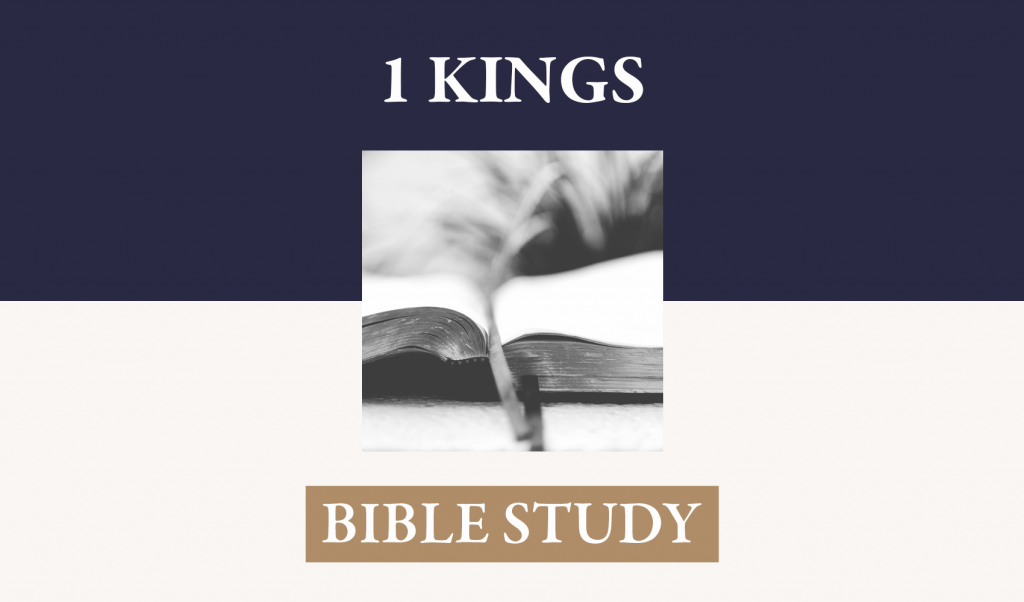In Psalm 127, Solomon wrote, “Unless the Lord builds the house, they labor in vain who build it.” This newly completed house of the Lord had been planned by David but reserved in the building of it for Solomon. Solomon knew, however, that this was a designated place where the people would meet God. Solomon himself is a type of Christ in his prayer for God’s grace toward his people. The Temple is a type of Christ in his incarnation. The ark is a type of Christ in his substitutionary, sacrificial death. The people come to God and find mercy and forgiveness, safety and deliverance, life and joy only through the designated place and person whom he has set forth. This is a picture of the house that the Lord built (Hebrews 8:1, 2).
I. The Development of the Chapter
A. The priests, according to the law, brought the Ark of the Covenant into the temple (1-11).
-
- David’s first attempt at bringing back the ark was disastrous and resulted in the death of Uzzah. They did not do it according to the specific instructions in the law (2 Samuel 6:1-9).
- After consulting the law, David again sought to move the ark to Jerusalem, this time according to the law (Exodus 25:10-16; 1 Chronicles 15:11-15).
- The priests moved the ark of the covenant into the newly finished temple, into the Holy of Holies (3-8). The law, the standard of righteousness and the revealer of sin is in the ark. Moses recited this in Deuteronomy 10:1-5. Eventually Aaron’s budding rod (Numbers 17:1-11) and a jar of manna were included in the ark (Hebrews 9:4). God’s provision for his people in temporal needs (Philippians 4:18-20) and for eternal salvation in company with God’s righteousness were under the provision of a sacrifice for sin (Hebrews 9:23-26). Aaron’s rod (Hebrews 9:4) symbolized the singularity of the high priest, a man of God’s own choosing: “the man whom I shall choose” (Numbers 17:5).
- Sacrifices were being made while the ark was being transported, showing that the significance of the ark was bound up in the sacrifices. God’s covenantal arrangements with his people require sacrifice for sin. He binds himself to them by means of the sacrifices that he himself requires and provides (Hebrews 13:20, 21).
- The glory of the Lord filled the house of the Lord. God’s greatest glory is seen in his provision of redemption for sinners. He could have retained his rule, his sovereignty, his righteousness without redeeming any fallen creatures. But he would have none but unfallen angels loving him; all sinners would be justly under his eternal wrath. The purpose of his image bearers to love the Lord with all their heart, mind, soul, and strength would never see fulfillment in any. But in the overflow of his goodness, which is the basis of his holiness and righteousness, he also had an eternal purpose to demonstrate that he is filled with patience, mercy, lovingkindness, and grace. Also, the unending depth of his wisdom demonstrated in the manner of redemption would never be known by any but himself.
When the ark, therefore, enters the Most Holy Place, the glory of the Lord shone forth in its full splendor (Hebrews 9:11, 12). Now sinners will praise him endlessly and speak of his might, power, holiness, righteousness and also his mercy, patience, forgiveness, lovingkindness, and eternal grace. They will love him and praise him without pause and find their greatest joy in so doing. They are the redeemed by the blood of the Lamb.
B. Solomon makes observations about the significance of this event (12-21).
-
- The place for God’s dwelling with his people had now been completed (12, 13).
- Before God selected a place, he selected a person, David (16, “but I chose David”).
- In Solomon’s construction of the temple, the ministry of David is extended and the person and the place become united in the location of the ark in the temple (21). The person of redemption is the Lord Jesus Christ—God and man in one person—and the place is his body—“His own body on the tree”—the temple that the Jews would destroy and that Jesus would raise in three days (John 2:19-21)
C. Solomon prays to the Lord as a God of covenantal faithfulness (22-53). He sets forth a variety of scenarios in which God’s people must return to God by recognizing that his covenant faithfulness is represented in the place and person he has selected.
-
- Solomon recognizes that the blessings of that day are in fulfillment of a covenant made with David (22-26).
- Solomon recognized that God’s infinity transcends any place in all creation and the house that he has built cannot contain him. But he also looks to the place as designated by God himself as a place where he will be found and justice and mercy abound (27-30).
- This is the place where issues of justice and righteousness will be adjudicated by the Lord. He will hear cases and bring judgment (31, 32).
- When enemies defeat the people, and they turn toward the Lord as he is manifest in the temple and the ark, they will find restoration. (33, 34).
- If God chastens through drought and the people turn to him in prayer “toward this place, and confess your name and turn from their sin,” then God will forgive, teach them the way of righteousness and send rain. Spiritual conversion will bring the remedy for the punishment (35, 36).
- In verses 37-40, Solomon asks for God’s gracious response in a variety of judgmental calamities—famine, mildew, blight, destructive insects, enemies—“whatever plague, whatever sickness”—for individuals according to the reality of their repentance and supplication to the Lord. Solomon emphasized the condition of the heart and the importance of the place: “toward this house.”
- Solomon prays for the inclusion of the foreigner in the benefits of God’s merciful presence as the Lord himself has designated in “this house” (41-43). When Jesus spoke at Nazareth and pointed out that foreigners, Naaman and the widow of Sidon, had received mercy from the Lord to the exclusion of Israel, they sought to kill him (Luke 4:23-27).
- In battle against enemies when they are sent by God and they pray toward the city and “the house which I built for your name,” give success to their cause (44, 45).
- When their sin brings such a judgment that they are taken away into captivity, hear their heartfelt prayer, see their turning toward the land, the city, and the house you have given, remember they are your chosen people redeemed from Egypt, and “maintain their cause” (46-53). The captivity of the northern kingdom is described in 2 Kings 17. The defeat and captivity of Judah is covered in 2 Kings 24, 25. Also the books of Jeremiah, Ezekiel, Daniel, Habakkuk, Ezra, Nehemiah, and Esther are in the context of this captivity.
D. Solomon faced the people and uttered a benedictory statement over them (54-61).
-
- Compare verses 22 and 54. At some point in his prayer, Solomon took the position of kneeling with his hands spread toward heaven. At the end of that prayer, he stood and issued a statement of blessing and an admonition to the people assembled (54, 55).
- He divided this benediction into several parts.
-
-
- God has been faithful to all his promises (56).
- May his sustaining presence continue even as he has not forsaken the people from the time of Moses to the present (57).
- As we are dependent on his grace toward us, may the Lord himself incline our hearts toward him (58).
- May the Lord keep the requests of this prayer near him and sustain his people according to its requests as a witness to all people that there is no god except the God of Israel (59, 60).
- In light of all these requests and the demonstrated faithfulness of God, the people are admonished to be “wholly devoted to the Lord” (61).
-
E. Solomon and the people observe the worship of sacrificial offerings (62-64). The people of God must recognize the infinite cost of redemption in God’s claiming a people for himself. Even with the massive effusion of blood on this occasion, sacrifices would continue through the subsequent centuries for the blood of bulls and goats and sheep could never take away sin. Only the sacrifice of the Lamb of God would end the typological blood-letting of amoral animals (John 1:29; Hebrews 7:26-28; 9:11-15).
F. Solomon encouraged a corporate feast for seven days and then another seven days of joyful celebration as families (65, 66). The redemptive sacrifice of Christ should be the unending source of our joy (1 Peter 1:2, 8-9).
II. Controlling Ideas
A. God’s covenant with David is being fulfilled.
- The covenant of God was symbolized by the ark, the place of sacrifice.—“a place for the ark, in which is the covenant of the Lord” (21). God is reconciled to sinners only by the blood of the eternal covenant (Hebrews 13:20, 21).
- This covenant was a manifestation of God’s sovereignty (23-26) and his eternal will that creatures restored by his grace and power would worship him and enjoy him forever.
- God’s sovereignty in redemption-Election – God chose David and Israel (15, 20, 21, 48, 51, 53). He chooses persons to vocations (1 Kings 7:13), as vehicles of his providential purposes (Isaiah 45:1-13), and as heirs of salvation (Ephesians 1:3, 4).
B. God appointed a place of mercy and acceptance (30, 31, 33, 35, 42, 48). We appeal to God for answers to prayer on the basis of his own designated place of forgiveness and justification, the work of Christ.
C. God is a hearing God (30, 36, 39, 43, 45, 49, 52).
D. True religion involves fear of the Lord (40, 43). We approach God with awe, a trembling of soul and spirit at the prospect of entering before the Holy One, the Creator of all things, the righteous judge, and the One who has mercy that he may be feared. “Therefore, since we are receiving a kingdom that cannot be shaken, let us have grace, by which we may serve God acceptably with reverence and godly fear” (Hebrews 12:28). “Serve the Lord with fear and rejoice with trembling” (Psalm 2:11). “But there is forgiveness with you, that you may be feared” (Psalm 130:4).
E. True religion is heart religion. “For it is good that the heart be established by grace” (Hebrews 13:9). “Blessed are the pure in heart for they shall see God” Matthew 5:8). “Out of the heart proceed evil thoughts, murders, adulteries, fornications, thefts, false witness, blasphemies” (Matthew 15:19). “A good man out of the good treasure of his heart brings forth good; and an evil man out of the evil treasure of his heart brings forth evil. For out of the abundance of the heart his mouth speaks” (Luke 6:45). Our hearts are fouled by sin and rebellion, and from them flow all kinds of sins. The heart must be inclined toward God and his righteousness by God himself and be changed by grace and continually purified by the Holy Spirit (38, 39, 47, 48, 58, 61).




















